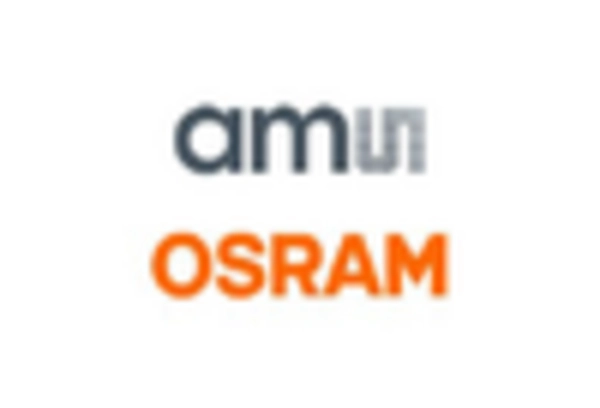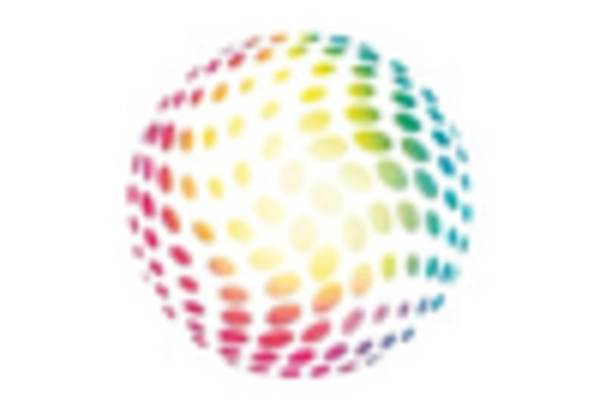Focus on Energy Efficiency
Energy efficiency is a critical driver in the Railway Interior Lighting Market, as operators seek to reduce operational costs and environmental impact. The shift towards energy-efficient lighting solutions, particularly LED systems, is gaining momentum. These systems consume significantly less energy than traditional incandescent or fluorescent lights, leading to lower electricity bills and reduced carbon footprints. Reports suggest that energy-efficient lighting can reduce energy consumption by up to 70%, which is particularly appealing for railway companies aiming to meet sustainability targets. Additionally, regulatory frameworks are increasingly favoring energy-efficient technologies, further incentivizing railway operators to invest in modern lighting solutions. This trend not only aligns with global sustainability goals but also enhances the overall appeal of rail travel.
Regulatory Compliance and Safety Standards
The Railway Interior Lighting Market is influenced by stringent regulatory compliance and safety standards that govern lighting installations. Authorities worldwide are implementing regulations to ensure that lighting systems meet specific safety and performance criteria. This includes requirements for brightness levels, emergency lighting, and energy efficiency. Compliance with these regulations is essential for railway operators to maintain operational licenses and ensure passenger safety. As a result, there is a growing demand for lighting solutions that not only meet but exceed these standards. The market for compliant lighting systems is expected to expand, as operators prioritize investments in technologies that enhance safety and reliability. This trend underscores the importance of adhering to regulatory frameworks while also improving the overall passenger experience.
Technological Innovations in Lighting Systems
The Railway Interior Lighting Market is experiencing a surge in technological innovations that enhance lighting systems. Advanced LED technology, for instance, offers energy efficiency and longer lifespans compared to traditional lighting solutions. The integration of smart lighting systems, which can adjust brightness based on occupancy and time of day, is becoming increasingly prevalent. This not only improves energy consumption but also enhances the overall passenger experience. According to recent data, the adoption of LED lighting in railway interiors is projected to grow by approximately 20% annually, indicating a strong shift towards modern lighting solutions. Furthermore, the incorporation of IoT technology allows for real-time monitoring and maintenance, potentially reducing operational costs for railway operators.
Increased Investment in Railway Infrastructure
The Railway Interior Lighting Market is benefiting from increased investment in railway infrastructure across various regions. Governments and private entities are recognizing the importance of modernizing rail systems to improve efficiency and passenger experience. This investment often includes upgrading interior lighting systems to meet contemporary standards. Recent reports indicate that infrastructure spending in the railway sector is projected to rise significantly, with a focus on enhancing passenger amenities. As a result, the demand for advanced lighting solutions is expected to grow, driven by the need for improved safety, energy efficiency, and aesthetic appeal. This trend not only supports the development of the railway sector but also contributes to the overall enhancement of public transportation systems.
Growing Demand for Aesthetic and Functional Designs
The Railway Interior Lighting Market is witnessing a growing demand for aesthetic and functional lighting designs that enhance the overall ambiance of train interiors. Passengers increasingly expect a visually appealing environment that complements their travel experience. Innovative lighting designs, such as customizable color schemes and dynamic lighting effects, are becoming popular among railway operators. This trend is supported by market data indicating that aesthetically pleasing environments can improve passenger satisfaction and retention rates. Furthermore, functional designs that provide adequate illumination for reading and other activities are essential for enhancing comfort during travel. As railway companies strive to differentiate their services, investing in attractive and functional lighting solutions is likely to become a priority.


















Leave a Comment